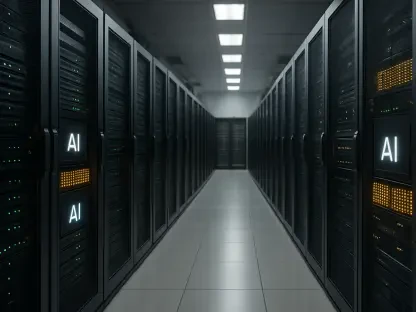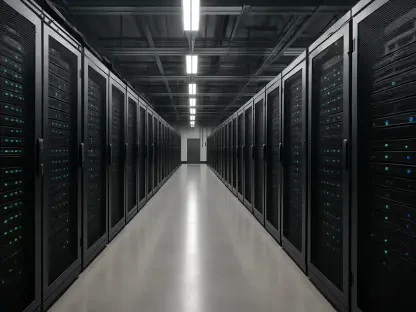As technology continues to evolve at breakneck speed, the role of data centers in supporting digital infrastructure capabilities is more critical than ever. However, these centers are notorious for their high energy consumption, leading to growing concerns over environmental impact. In the heart of Scotland, a pioneering project aims to redefine this narrative. This transformation involves converting the historic Ravenscraig steelworks into a state-of-the-art, environmentally friendly AI data center. Spearheaded by renewable energy innovator Apatura, the initiative is a core aspect of the UK’s AI Growth Zone scheme. Key to its success is harnessing Scotland’s abundant renewable energy resources. This project seeks to balance technological advancement with ecological responsibility.
This conversion is poised to not only reduce environmental footprints but also spark economic growth, predicting the creation of over 2,000 jobs and attracting substantial financial investments. Enabling this vision is a proposed 160-acre battery energy storage facility powered by 550 megawatts of grid connections slated for realization by 2030. Ravenscraig is just one of the five strategic ‘AI-ready’ sites under development across Scotland’s Central Belt, ensuring a widespread impact across the region. This ambitious endeavor underscores Scotland’s expertise in merging green energy with advanced artificial intelligence and represents a potential model for global implementation in the industry.
The Green Revolution in Data Centers
The significance of building environmentally sustainable data centers goes beyond the ecological benefits. These centers also represent a significant business opportunity. With the soaring energy demands linked to generative AI, traditional energy models in data infrastructure are becoming unsustainable. Enter the green data center, designed to optimize energy efficiency, manage e-waste effectively, and conserve water. In this modern landscape, the quest for greener energy solutions is not merely aspirational but a business imperative. Generative AI’s role in shaping data processing and computational needs necessitates a sustainable infrastructure approach.
The UK has taken significant strides in this area with projects like the DSM Group’s facility in Peterborough. Focused on sustainability, this center incorporates renewable energy sources alongside cutting-edge cooling technologies. Such initiatives highlight a national commitment to reducing carbon footprints and demonstrate forward-thinking strategies in addressing the data infrastructure’s energy demands. As the world grapples with environmental challenges, these green data centers serve as a blueprint for future developments. Moreover, they emphasize the need to redefine data center operations to align with global sustainability goals in the digital age.
Collaboration for Power Demands and Sustainability
To truly harness the potential of green data centers, strategic collaboration between government and industry is paramount. The increasing energy demands present both a challenge and an opportunity, necessitating concerted efforts to unlock low-carbon power investments. By investing in smart networks and energy-efficient technologies, stakeholders can facilitate approximately 5 GW of green data center growth over the coming years. Organizations like Aurora Energy Research highlight the potential of such partnerships to drive large-scale investments and ensure robust infrastructure development.
Given the complex energy landscape, these initiatives require meticulous planning to maximize efficacy and impact. The intersection of policy and innovation is vital to creating a resilient and adaptable grid. The future of digital infrastructure hinges on intelligent solutions that integrate green technology into everyday operations. By fostering collaboration and innovation, the industry can transform data centers from energy-draining behemoths into cornerstones of sustainable practices. The project at Ravenscraig is a step toward realizing this vision. It exemplifies how concerted efforts can pave the way for expansive, sustainable growth in technology.
Paving the Path for Future Transformation
As technology advances rapidly, data centers play an increasingly vital role in supporting digital infrastructure, yet they are infamous for high energy use, raising environmental concerns. In Scotland, a groundbreaking initiative aims to redefine this image by transforming the historic Ravenscraig steelworks into a cutting-edge, eco-friendly AI data center. Led by renewable energy pioneer Apatura, this project is central to the UK’s AI Growth Zone scheme, leveraging Scotland’s bountiful renewable energy resources. The project balances tech innovation with ecological responsibility.
Expected outcomes include a decreased environmental footprint, economic growth, over 2,000 new jobs, and attracting significant financial investments. A proposed 160-acre battery energy storage facility, powered by 550 megawatts of grid energy connections, is envisioned by 2030. Ravenscraig is just one of five strategic ‘AI-ready’ sites in development across Scotland’s Central Belt, promising widespread regional impact. This ambitious project highlights Scotland’s leadership in green energy and AI integration, potentially serving as a global industry model.









